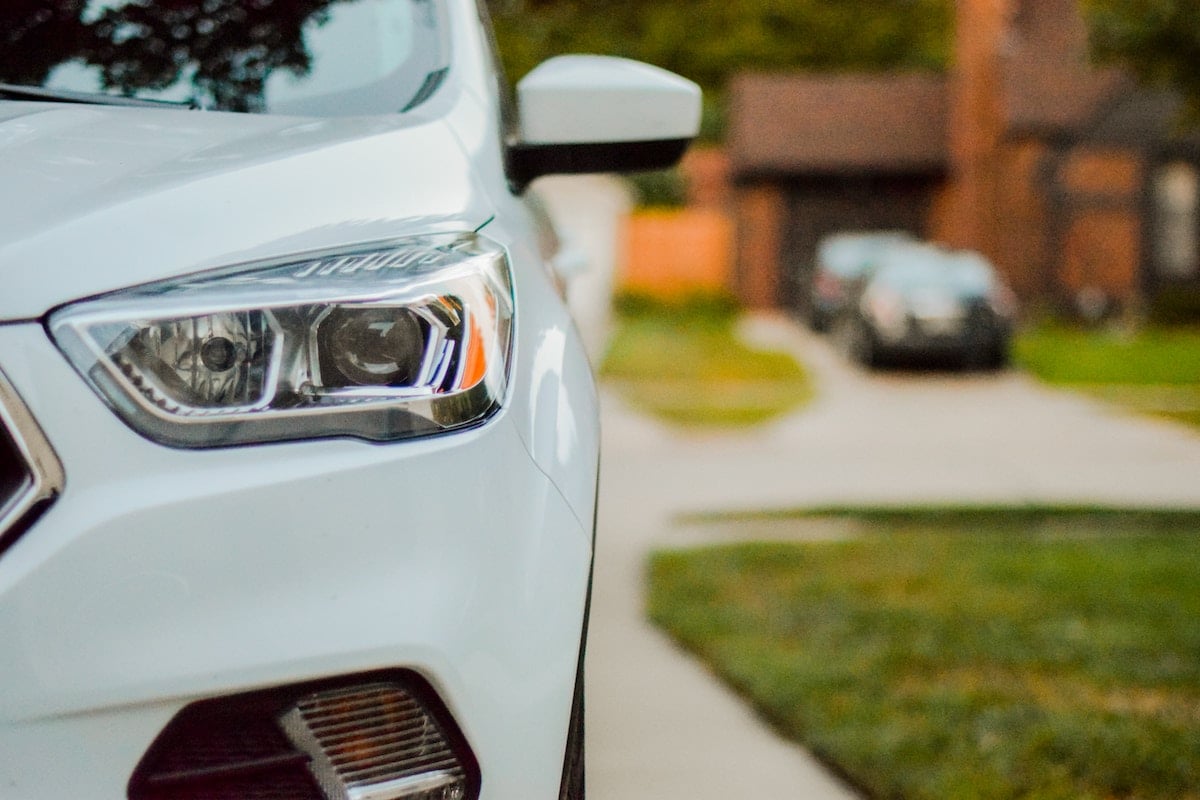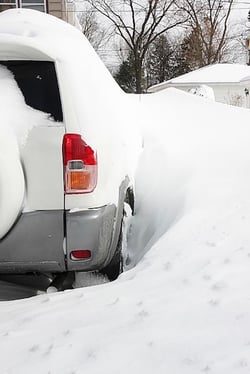
Photo by Sarah Brown on Unsplash
When you think of the most stolen vehicles in Canada, you would expect new luxury cars, SUVs, and trucks to be among the most targeted types by auto thieves.
That’s not even close, actually.
The Insurance Bureau of Canada (IBC) recently released their annual list of the top 10 most stolen vehicles in Canada for 2019 and we must admit – it’s not what we expected.
Top 10 most stolen vehicles in Canada
- 2007 Ford 350
- 2006 Ford 350
- 2005 Ford 350
- 2004 Ford 350
- 2006 Ford 250
- 2003 Ford 350
- 2018 Lexus RX350/RX350L/RX450h/RX450hL
- 2005 Ford F250
- 2002 Ford F350
- 1998 Honda Civic Si
Why are older Ford pickups such magnets for thieves?
Other than several models of the 2018 Lexus RX, there are no new vehicles to be seen on the list. Goodness, there’s no other vehicles on there that even qualify as “relatively new”!
So what gives? Why are not one, not two, but eight of the most stolen vehicles in Canada heavy-duty Ford pickups whose ages are well into the double digits?
It comes down to availability, design, and demand.
Ford F-Series trucks are the best-selling vehicles in North America. In Canada, they’ve held that crown for a decade. As a matter of fact, F-Series trucks account for half of Ford Canada’s sales.
In addition to so many of these pickups being spread around the country, pre-2008 F-Series models lack an ignition immobilizer. It does exactly what you’d think, which makes the trucks easy to hot-wire.
Stolen pickups and SUVs are also highly coveted for their overseas resale value. Combine all of these factors and you have the answer as to why the F-Series dominates this list of the most stolen vehicles in Canada.
Why is a 22-year-old car one of the most stolen vehicles in Canada?
You may also be wondering, “What’s the deal with a 21-year-old Honda Civic being such a car thief magnet?”
Like the Ford pickups, it once again comes down to the popularity and design of that specific car model.
1998 was the year the Civic started its impressive run (that has yet to be broken) of being the best-selling car in Canada. With that level of popularity comes a high-demand market for “hot” Civic parts.
Newer Civic models are less attractive to car thieves because they’re simply harder to steal than the older models.
Ontario, Alberta, and B.C.’s most stolen vehicles
The IBC’s list of the most stolen vehicles in Canada also provides a breakdown showing which models thieves prefer in each province.
Here’s what their data shows for three of Canada’s most populous provinces:
Ontario:
- 2014 Land Rover Range Rover Sport
- Lexus RX350/RX350L/RX450h/RX450hL
- 2011 Land Rover Range Rover Sport
- 2005 Chevrolet/GMC Tahoe/Yukon
- 2016 Land Rover Range Rover
- 2002 Chevrolet/GMC Tahoe/Yukon
- 2004 Chevrolet/GMC Suburban/Yukon XL 1500
- 2006 Chevrolet/GMC Silverado/Sierra 2500
- 2005 Chevrolet/GMC Suburban/Yukon XL 1500
- 2018 Toyota 4Runner
Alberta:
- 2007 Ford F350
- 2006 Ford F350
- 2006 Ford F250
- 2004 Ford F250
- 2005 Ford F350
- 2005 Ford F250
- 2000 Honda Civic Si coupe
- 1999 Honda Civic hatchback
- 2004 Ford F350
- 2007 Ford F250
British Columbia (model years unavailable):
- Ford F-Series trucks
- Honda Civic and CRX
- Dodge trucks
- GMC/Chevy trucks
- Ford E-Series vans
- Jeep Cherokee and Grand Cherokee
- Acura Integra
- Toyota Corolla
- Honda CRV
- Dodge Caravan
8 more facts about vehicle theft in Canada
Smart car tech means more convenience and versatility for drivers, but that also makes them more vulnerable to smart thieves.
While thieves favour older vehicle models because of their relatively inferior security features, tech-savvy criminals are still managing to figure out how to outsmart the sophisticated tech built into modern vehicles.
The IBC calls vehicle theft “much more than an insurance problem, it’s an expensive social menace”. That can’t be disputed when you look at some facts about vehicle theft in Canada:
- every seven minutes, a vehicle is stolen in Canada
- Statistics Canada says that 86,132 vehicles were reported stolen in Canada in 2018
- vehicle theft costs drivers almost $1 billion annually
- insurance companies cover about half of that $1 billion amount to replace and repair stolen vehicles
- law enforcement, courts, and the health care system need to devote large resources to theft-related matters
- selling stolen vehicles for their parts is more lucrative than selling entire vehicles
- air bags, catalytic converters, and car seats are the most coveted parts resold from stolen vehicles
- when a vehicle is stolen just to commit another crime, it is typically abandoned and found within two days with significant damage
One of the best ways to prevent car theft? Park in your garage.
Even if you’re not an owner of one of the most stolen vehicles in Canada, you shouldn’t have a false sense of security about how safe your parked vehicles are.
An experienced thief can steal a vehicle without a key in as little as 30 seconds. Completely eliminating the accessibility thieves have to your vehicles by simply parking in the garage instead of the driveway is one of your best defenses against theft.
Parking in your garage may be easier said than done if the room lacks adequate systems to keep it organized, causing it to become overrun by clutter.
Garages are usually the most cluttered rooms in a house, to the point where 25% of people with 2-car garages don’t park in them at all. A third can only park one car, according to a U.S. Department of Energy study.

Parking in the garage makes your vehicles less visible and accessible to potential thieves.
Additional best practices to protect your vehicles
There are many other common-sense ways to ensure the protection of your vehicles that will cost you nothing.
Lock your vehicle doors and keep the windows shut at all times, even if the vehicle is only going to be left unattended in the driveway for a few minutes. A good thief only needs a window that’s cracked open an inch to get inside a vehicle.
It doesn’t get much easier for a car thief than finding an unattended, unlocked idling vehicle just waiting to be separated from its careless owner. Avoid extended idling periods in the driveway and especially an attached garage (which raises the risk of high levels of carbon monoxide entering the main living space). Think twice about using a remote starter to warm your vehicle up on cold mornings, too.
Park in safe, well-lit areas when you’re away from home, even if it means the walk to your destination is a little bit longer. Owners of older vehicles should consider investing in anti-theft devices like steering wheel locks, brake pedal locks, and GPS tracking systems.
Be mindful of keeping important documents like insurance paperwork well-hidden or avoid keeping them in the car altogether. In the wrong hands, they can be used for insurance fraud or identity theft. Remember, a locked glove compartment in most vehicles is child’s play for a thief to break into.
Don’t give a burglar any extra incentive to break into your vehicle by leaving anything of value (even loose change) visible.
By “anything of value” we’re including your key fob and traditional car key. Between 2013 and 2018, the number of vehicles stolen because their keys or fobs were simply left inside them has increased 88% according to a National Insurance Crime Bureau report.
Even when you’re at home, be careful about where you keep your fob. These devices may be super-convenient, but they’re vulnerable to what is known as relay theft. Fobs kept within close proximity of a home’s walls, windows, or an exterior door can potentially have their signal hijacked by a pair of thieves outside the house using wireless transmitters.
As a safeguard, store your fob in a closed metal box (which blocks the signal) in a centralized part of the home.
7 more good reasons to park in your garage
 Besides safeguarding what are likely the most expensive assets you have besides your home, here’s why the garage and not the driveway should be where you’re parking:
Besides safeguarding what are likely the most expensive assets you have besides your home, here’s why the garage and not the driveway should be where you’re parking:
- Vehicle windows will be less prone to fogging up in damp weather and from early morning dew.
- Indoor parking lets you avoid dealing directly with bad weather when entering and exiting vehicles.
- Vehicles are protected from body damage caused by long-term exposure to the sun, tree sap, and projectiles when there are high winds.
- Parking in a safe space means some insurance companies may lower your insurance rates.
- Vehicles won’t need snow and ice cleared off in the winter, which saves you time.
- Having your vehicles closer to the garage access door into your main living space is more convenient for getting groceries and other transported items inside.
- Vehicles will warm up faster in cold weather.
Make space in the garage to keep your vehicles safe
Whether or not you own any of the cars or trucks on this list of the most stolen vehicles in Canada, it never hurts to be reminded about what you can do to keep your vehicles more secure.
If you’re one of the many homeowners who can’t park in the garage because of clutter (or you can, but find it difficult to do so because there’s so little space), it’s a problem that has an easy solution.
Talk to Garage Living to find out how we can make your garage an organized, clutter-free space that can give your vehicles back their rightful home.
Our storage systems include slatwall, cabinetry, and overhead racks to help maximize any garage’s storage space and update its look. To create more garage parking space, we can also install a car lift.
Schedule a free design consultation with us to get your garage in order so you can reclaim it for parking your vehicles indoors once again.
Please share this post if you found it useful.